Did you know the Middle School has a Ski Club?
Advisors Michele Semco and JoAnn Westby took some students to Mountain Creek several days back for a wonderful late afternoon and evening gathering on the slopes!




Great sporting experiences come in many different ways! This past weekend, the Girls Modified Basketball team had an incredible time attending a SUNY Orange basketball game during Alumni Night!
What made this event even more special was knowing that Modified Coach Kelsie Doller played on that very court! Seeing her connection to the program showed the girls where they are now, to where hard work and dedication can take them.
The girls loved watching the SUNY Orange players in action and were amazed to see them doing many of the same warm-ups and plays they’ve been practicing. It was a great reminder that the fundamentals they’re learning now are essential at every level of basketball.
To top it all off, the team had the chance to meet the SUNY Orange women’s basketball coach, who encouraged and inspired them even more!





Middle School art teacher Brian Maione’s eighth-grade students are working on abstract sculpture pieces during their art class! Their pieces have been made using wire, wood and nylon. Soon, they’ll be using Mod Podge to give their work a hardened shell so that they can paint and make cool and funky patterns on them. So creative!




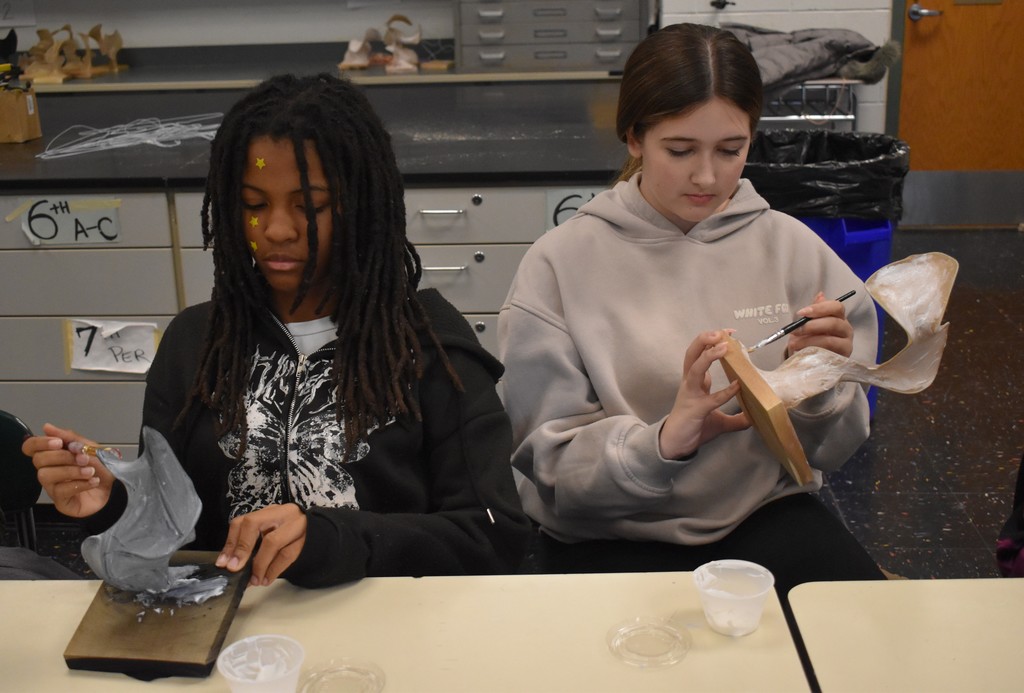
More lessons tied to and awareness of the life and legacy of The Rev. Dr. Martin Luther King Jr. are visible in the middle school, via these school displays!
In the library, a display created by teacher Kelsey Doller and her students following their viewing of a slideshow about Dr. King and his six principles of nonviolence features small paper cutouts to look like themselves and reflect their individuality.
The other display was created using artwork that Corinne Yanis' Skills classes, Stephanie Gage's English classes and several sixth-grade students created after viewing a slideshow about those same principles. The portrait of Dr. King was drawn by eighth- grader Isabella Kaminski.


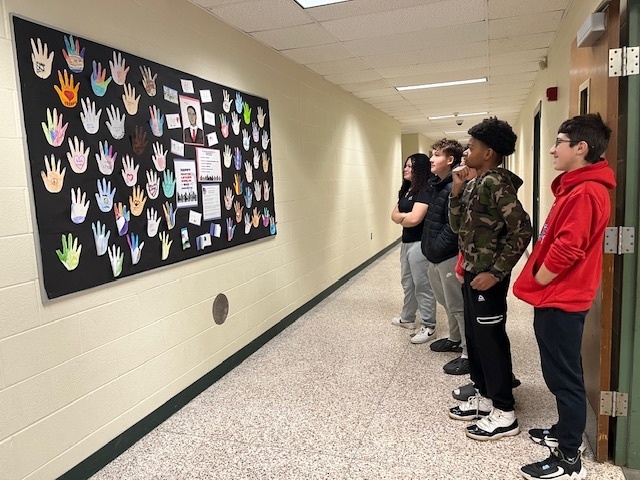

“We're all in this together!”
The Middle School Drama Club has been working hard in rehearsals to be ready for its March 6 and 7 production of Disney's High School Musical Jr!
Thank you to High School students Audrey Guido and Makayla Collins, who are are working with Middle School students to learn choreography! We appreciate you! Watch for more information soon!

Do you know or remember what PEMDAS means? Sixth-graders do!
Take a peek at Jeffrey Malara’s sixth-graders, who are practicing applying this acronym to their math work! They’re really good at this, too!
PEMDAS stands for "Parentheses, Exponents, Multiplication, Division, Addition, Subtraction," which is an acronym used to remember the order of operations when solving math problems with multiple operations. It means you perform calculations inside parentheses first, then exponents, then multiplication and division from left to right, and finally addition and subtraction from left to right.
The Order of Operations is a set of rules for solving math equations and expressions with multiple operations. This set of rules ensures that all math equations are solved in the same way.





What's better than hot soup on a cold, cold day?
Victoria Ingrassia's Middle School FACS students have spent this first week back at school prepping ingredients to make four different types of fresh, homemade soups. Today, Jan. 10, was their Soup Day, where students had a chance to enjoy what they prepared during class!
PLUS: Ms. Ingrassia invited the Middle School faculty to stop by for a delicious cup or bowl of the soup of their choice! Simply delicious! Well-done to all the students, who are learning important life skills --- you have to be able to cook!

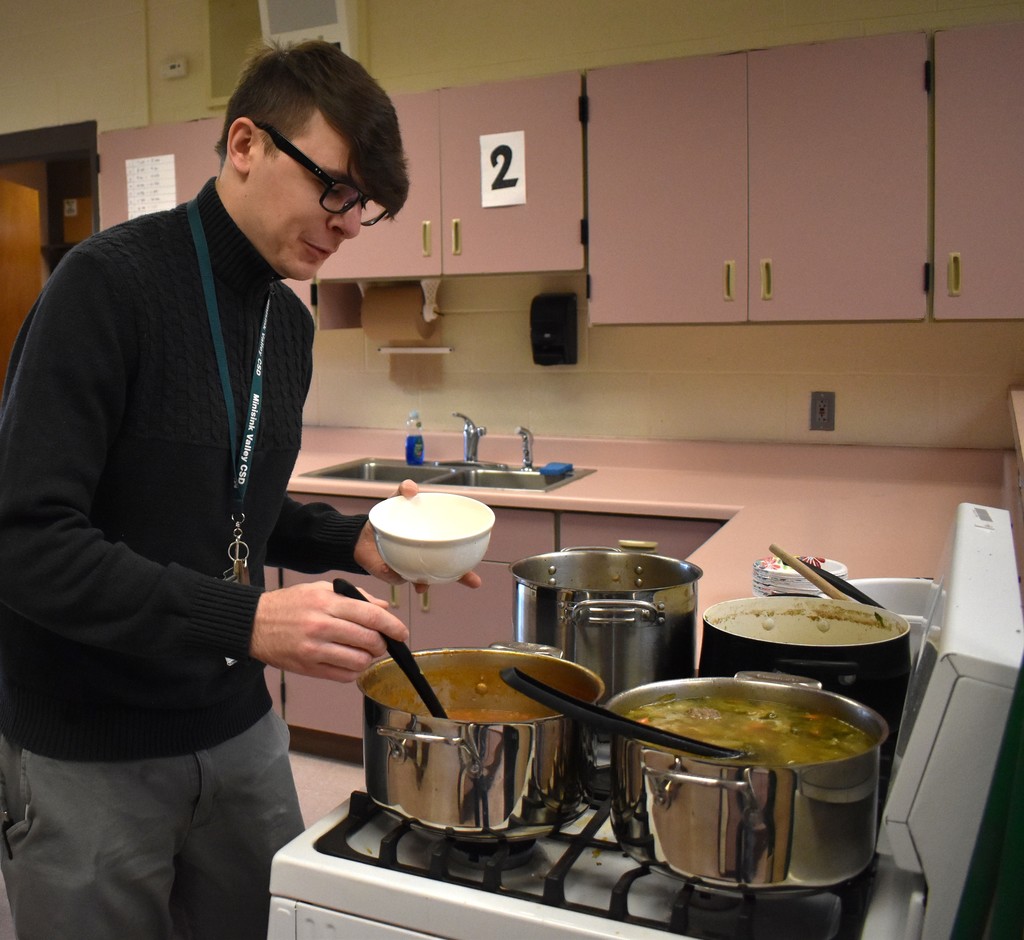

Reminder! Minisink Valley has partnered with Paper, an online tutoring service, to provide students in Grades 6 through 12 with the ability to access live tutors seven days a week, 24 hours a day. High School students and family members have unlimited access to trained tutors so every student can ask questions, work through problems and grow their confidence at no cost to families. Learn more: https://www.minisink.com/page/paper-online-tutoring-for-grades-6-12

Basketball is always a fun physical education activity! Check out these eighth-graders perfecting their shooting skills. Maybe there's some future NBA/WNBA players in this group!




Before the break, the Middle School’s Minisink Motivates Club traveled to Otisville Elementary for their annual reading of the "Weird" series by Erin Frankel to second-grade classrooms. Middle schoolers read a story from the series and then completed an activity with students.
For the third consecutive year, middle school students and elementary school students had a great time interacting with one another and completing the activity. This is wonderful example of inter-school cooperation and relationships!








Allyson Kingly’s/Megan Clark's and Bridget O’Mara-Green’s seventh-grade math students had some holiday fun by completing a review equation holiday project. Students had to solve one or two equations, find the corresponding answers, and connect those red or green stripes of paper in order to create a holiday chain! Take a peek!






Victoria Ingrassia’s eighth-grade FACS students are blending seasonality with baking! Take a look at their spectacular gingerbread cookies! YUM! (Sorry, there’s no leftovers!)
Gingerbread dates back to ancient Egypt and Greece, where it was used for ceremonies. Honeycakes were found in pharaoh's tombs, and honey was considered a gift from the gods.
•In the 11th century, Crusaders brought ginger back from the Middle East, which led to the development of gingerbread in Europe.
The name "gingerbread" originally referred to preserved ginger.
The spices used in gingerbread changed over time as their popularity and availability varied.
n the 18th century, recipes began to include butter and cream, which led to gingerbread cookies that resemble what we know today.

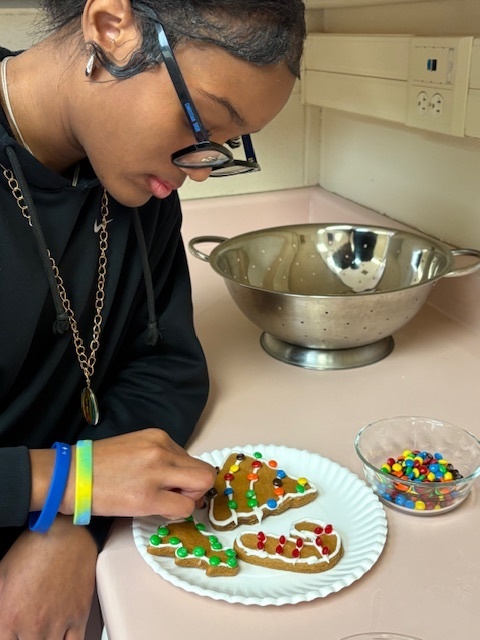




MIDDLE SCHOOL SEVENTH-GRADE FAMILIES:
Did you know there’s four NEW New York State investigations for Middle School seventh-grade science students? Our seventh-graders recently completed the first one called “All Mixed Up.” Take a peek and see more photos on the district's Facebook page: https://www.facebook.com/MinisinkValleyCSD/
The investigation takes several days and includes two packets of information, directions, data tables for observations and questions. “All Mixed Up” focuses on the separation of mixtures using knowledge of the material’s physical properties.
Depending on the unknown mixture they are given, students must use their observations of size, color, magnetism, state of matter and other properties to determine the best way to separate the items in the unknown mixture.
Students then used magnets, filters and filter paper, tweezers, a sieve, water (and evaporation), and other means to write their own procedure and then proceed to separate their mixtures.
This lab allows students to focus on properties of matter, practice separation techniques, encourages students to foster critical thinking and scientific inquiry skills while being a key component of New York State middle school science assessment aligning with state learning standards for matter and its properties.





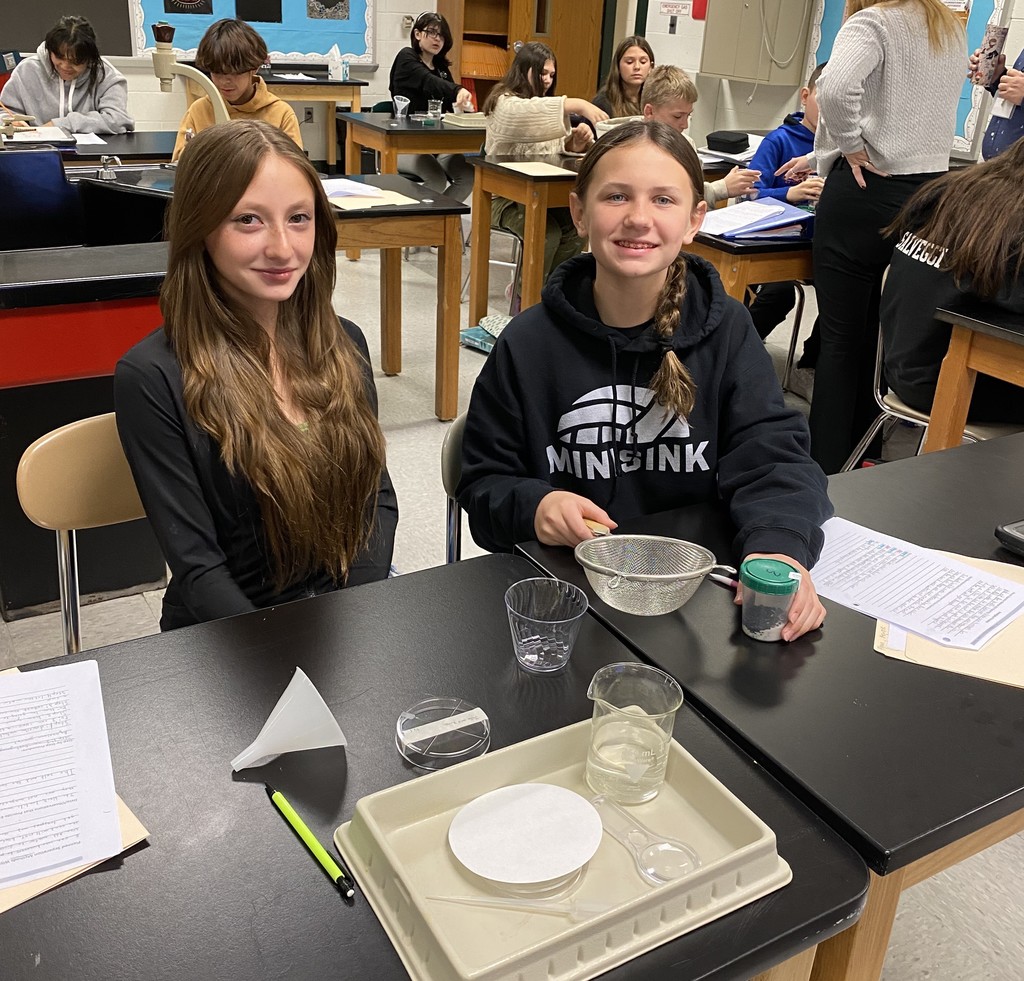
Jessica Dickman’s and Katie Blydenburgh’s seventh-grade ELA students recently watched a TED Talk by Salva Dut, which was the inspiration to, and what half Sue Park’s “A Long Walk to Water” novel is focused on. Students read her book in class.
Students worked partners to identify advantages of watching Dut’s motivational speech focusing on perseverance, hope and faith along with his mantra “keep walking” no matter how difficult the challenges are in one’s life. These are important life lessons for everyone!
A TED Talk is a short, recorded presentation that aims to educate and inform audiences on a wide range of topics. TED stands for “Technology, Entertainment, and Design” and TED talks are presented by a variety of experts.
The main theme of Sue Park's "A Long Walk to Water" is the power of resilience and survival in the face of extreme hardship, particularly highlighting the struggle for access to clean water and the impact of war on individuals and communities, particularly though the stories of Salva and Nya, who live in the Sudan.



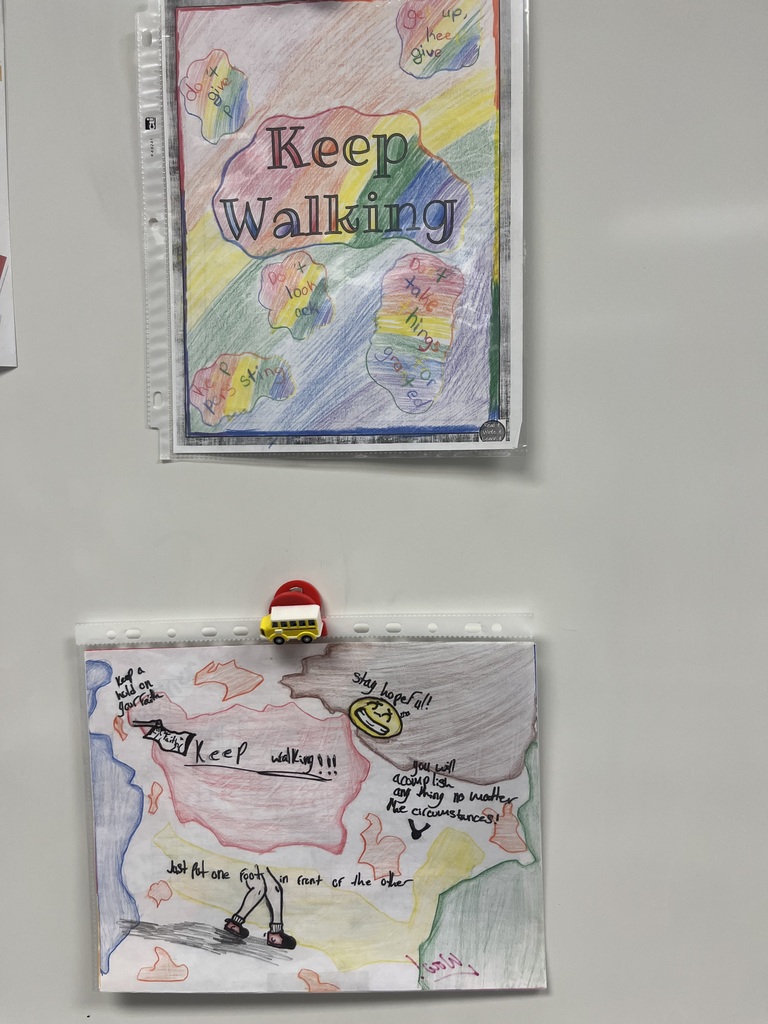
Thank you to everyone who participated in today's "Operation GIVEBACK" at the Middle School! Take a peek at some of the fun work done by students who made holiday cards for veterans, scarves for the Middletown Warming Station, pine cone bird feeders and ornaments for a local nursing home! Your kindness makes a HUGE difference in the lives of others!


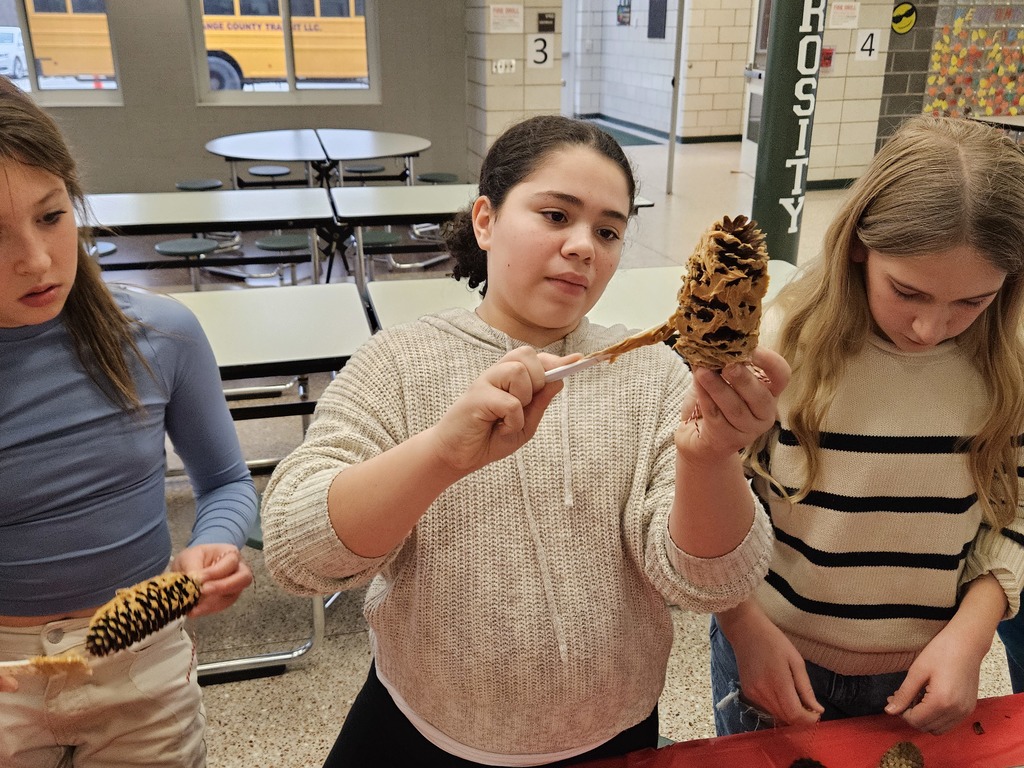



Eighth-graders are increasing their culinary skills in every FACS class! They’ve learned how to make homemade tortillas, then use them to make quesadillas! ¡Cocinar puede ser muy divertido y enseña importantes habilidades para la vida!
A tortilla is a thin, circular unleavened flatbread from Mesoamerica originally made from maize hominy meal, and now also from wheat flour. The word tortilla is derived from the Spanish word “torta,” meaning "cake," plus the diminutive “-illa”; so the word means "little cake" in Spanish.
Quesadillas can be traced back to Mexico when it was made only with a tortilla and cheese. The exact origin of the quesadilla is unknown, but it is believed to have originated in the northern regions of Mexico, particularly in the state of Sonora. The word “quesadilla” comes from the Spanish word “queso,” which means cheese. What makes a quesadilla a quesadilla is the use of a tortilla and cheese. But Over time, the quesadilla evolved to include a variety of fillings, including meats, beans, and vegetables.






FUN FACT: Board games are not just for playing and Oreos are not just for eating; they’re used for creative learning, too!
Andrea Ferguson’s and Jaclyn Lockett’s sixth-grade science classes have been learning about plate tectonics and how the plates move. In stations, students played Pictionary to review their vocabulary terms (divergent, convergent, transform and convergent boundaries) and manipulated Oreo cookies to show how the plates can move and the features that can be produced (mountains, rift valleys, and volcanoes). What a fun and creative way to learn! (And, of course, the Oreos were devoured afterward.)
•Divergent boundaries happen when plates move apart, creating new crust and magma. This can happen on continents or in the ocean, where it can form mid-ocean ridges and islands. The Mid-Atlantic Ridge is an example of a divergent boundary.
•Convergent boundaries happen when plates move toward each other, and one plate often slides beneath the other in a process called subduction. This can create mountains, volcanoes, earthquakes, and other geological events. The Pacific Ring of Fire is an example of a convergent boundary.
•Transform boundaries happen when plates slide past each other horizontally. This doesn't create or destroy crust, but they can cause earthquakes and pulverize rocks along the boundary. The San Andreas Fault in California is an example of a transform boundary.





Did you know that dominoes can be used in short STEM challenges to teach students about energy transfer, chain reactions and critical thinking? Just ask Teresia Parker’s and Jill Stramiello’s Middle School technology students!
The teachers have used dominoes as part of their "do now" or "anticipatory set" activities at the beginning of lessons. The intent is to immediately engage students, activate their prior knowledge about a topic, and mentally prepare them for the new information that will be presented. This is essentially setting the stage for the lesson by grabbing their attention and connecting them to the upcoming material.
Dominoes are perfect because they provide a hands-on, engaging way to explore fundamental concepts life force, motion, cause and effect and problem solving. Designing and building complex domino runs requires students to plan, analyze, and adjust their designs based on trial and error, promoting critical thinking and problem-solving abilities.



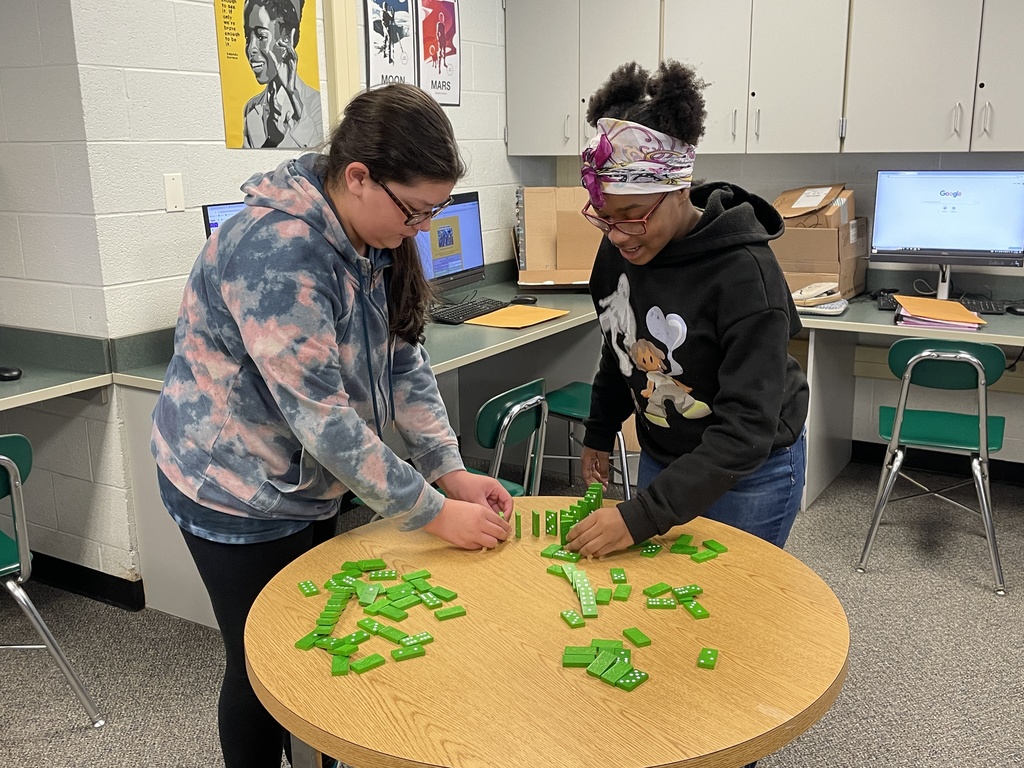


Nicole Lee’s and Jackie Lockett’s sixth-grade students recently took part in a very cool three-part lesson focusing on plate tectonics!
First, students create oversized Pangaea maps in groups, then independently completed a “vocabulary quilt” featuring various terminology.
Then they picked one term and its definition and drew on a mini-puzzle piece, making certain their pictures represented the term and two key words that were in the definition.
Lastly, students competed by having to put together other students' puzzles and guessing the vocabulary word. They kept track of the words and keywords on a travel sheet which then became their study guide.
Students also had a parallel lesson with science pixel art, completed web and scavenger hunts, and “moved” as the plates did. They guessed what was in the “mystery bags” to support phenomena and indirect evidence... they were gummy eyeballs!
•Plate tectonics is the theory that the Earth's crust is divided into large, moving pieces called "tectonic plates" which float on a semi-liquid layer beneath them, causing earthquakes, volcanoes, and the formation of mountains when they collide with each other.
Essentially, the Earth's surface is not solid but made up of puzzle pieces that are constantly shifting around, shaping Earth over time.
•Pangaea was a supercontinent that existed between 300 and 200 million years ago, when all the continents were joined together. The name Pangaea comes from the Greek word “pangaia,” which means "all the Earth.”
•Pangaea is tied to plate tectonics because the theory of plate tectonics explains how the supercontinent Pangaea formed, broke apart, and continues to influence the movement of continents today.






Middle School students recently had a fantastic field trip to Pets Alive! Take a peek!
Students toured the Pets Alive kitten nursery, followed by a tour of the barns where they had the chance to feed the goats and sheep.
Later, they visited the training tent, where they had some quality time with Harmony and Ava, two of Pets Alive’s adorable young dogs.
Students also learned more about careers that involve working with animals and finished up up their visit by stopping by the cattery to drop off their generous donations and the fantastic adoption posters they created!





